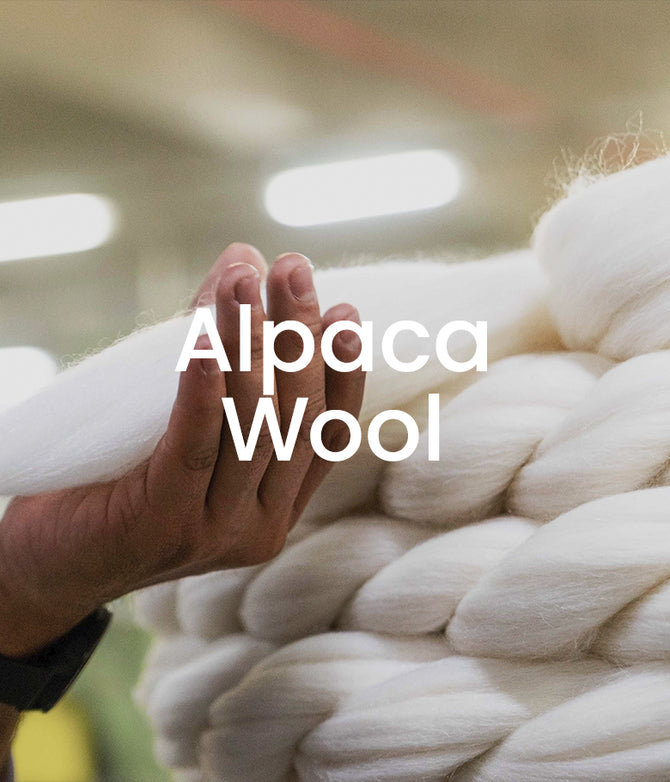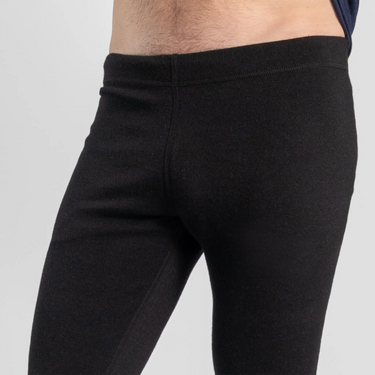Celebrating Biodiversity in Cusco:
A Living Treasure of Peru
Published May 22, 2025
1. Say Goodbye to Single-Use Plastics
Single-use plastics are a huge environmental problem, but small tweaks in your daily habits can make a big difference:
- Bring reusable bags: Make or buy groceries and produce bags to use instead of plastic ones. Keep them by the door or in your car so you never forget them.
- Ditch bottled water: Invest in a reusable water bottle [1]. If tap water isn’t safe, boil or filter it instead.
- Carry a reusable coffee cup: Even “eco-friendly” disposable cups create waste if not disposed of properly.
- Pack a zero-waste kit: Include bamboo or metal cutlery, a reusable straw, and a container for takeout. It might take practice, but soon it’ll feel natural.
2. Use Less Water and Energy
Every drop counts, and every watt matters. Here are a few small changes to reduce your footprint:
- Shorten your showers: A quick shower saves both water and energy. Bonus: it’s better for your skin too! [2]
- Turn off the lights: Unplug appliances and switch off lights when you’re not using them [3].
- Hang clothes to dry: Whenever possible, skip the dryer and hang your clothes. It’s gentler on fabrics and the planet.
- Flush smarter: If your toilet has an eco-flush option, use it. No eco-flush? Place a filled bottle in the tank to reduce water per flush.
At Arms of Andes we make our gear from 100% Royal Alpaca Wool of 18-18.5 microns.
3. Make Eco-Conscious Food Choices
Food is one of the easiest ways to live more sustainably:
- Buy local and seasonal: This reduces transportation emissions and supports local farmers [4].
- Cook from scratch: Homemade meals usually come with less packaging and waste.
- Be mindful about meat: Choose ethically raised options, like free-range chicken or grass-fed beef, and support sustainable farming practices. Exploring plant-based meals occasionally can also make a difference [5].
- Opt for sustainable groceries: Shop at packaging-free or bulk stores. No access? Buy in bulk at your regular store to minimize waste.
4. Rethink Your Transportation Habits
How you get around affects your carbon footprint. Start small:
- Walk or bike more: Even once a week can make a difference.
- Use public transport: Replace car trips with bus or train rides when possible [9].
- Carpool: Sharing rides with colleagues or friends reduces emissions.
- Fly less: For shorter trips, consider buses or trains. Offset your carbon emissions for long flights.
5. Choose Sustainable Fashion
The fashion industry is one of the largest polluters, but your wardrobe can make a difference:
- Avoid fast fashion: Look for quality over quantity. Cheaper often means corners were cut in ethics and sustainability.
- Buy second hand: Thrift stores and online resale platforms are great for finding unique, affordable items.
- Support eco-conscious brands: Do your research and choose brands that prioritize sustainability, like Arms of Andes, which uses 100% alpaca wool and natural dyes [6].
- Host clothing swaps: A fun way to give new life to unused items in your closet [7].

6. Upgrade Your Hygiene and Cleaning Habits
Small changes to your personal care and cleaning routines can have a big impact:
- Switch to bamboo* toothbrushes: Look for ones with compostable bristles and packaging.
- Choose steel razors: A durable, waste-free alternative to disposable razors.
- Use natural options: Biodegradable shampoos, soaps, and detergents are better for the planet.
- Use menstrual cups and fabric sanitary towels: They take a little getting used to, but you won’t go back when you do!
- Clean with vinegar and baking soda: These simple ingredients work wonders around the house and are free of harmful chemicals [8].
* When choosing products made from bamboo, try to ensure the bamboo comes from sustainable sources.
7. Embrace Nature and DIY Solutions
Spending time outdoors and trying DIY solutions are both fun and sustainable:
- Grow your own vegetables: Even a small herb garden on a windowsill can make a difference.
- Start composting: Turn food scraps into nutrient-rich compost for your garden. No garden? Check if your city collects food waste.
- Connect with nature: Spending time outside reduces stress and reminds us why protecting the planet matters.
- Join community initiatives: Participate in clean-ups or tree-planting events.
8. Be Mindful About Waste
Rethinking how you handle waste is key to sustainable living:
- Reuse before you recycle: Find new uses for things before throwing them away.
- Donate or swap: Let someone else enjoy what you no longer need.
- Avoid expedited shipping: One-day deliveries often mean more vehicles on the road, increasing emissions.
Sustainable living starts with REDUCING waste, REPAIRING and/or REUSING broken/unused items, before RECYCLING or, when possible, COMPOSTING them.
Why Small Steps Matter
You might think, “Will my tiny changes really help?” The answer is yes. If everyone made just one or two of these adjustments, the collective impact would be enormous. And remember, you don’t have to do everything at once. Pick a couple of these tips to start with, and add more as you go. Before you know it, living sustainably will feel like second nature.
So, are you ready to make 2024 your most sustainable year yet? Small steps today can lead to a greener tomorrow. Let’s get started—one habit at a time!

At Arms of Andes we make our gear from 100% Royal Alpaca Wool of 18-18.5 microns.
Reading time: 5 minutes
By Lesia Tello & Jordy Munarriz
Every May 22, the world comes together to celebrate the International Day for Biological Diversity—a moment to reflect on the intricate web of life that sustains our planet. In Peru, this day holds profound significance. As one of the world's 17 megadiverse countries, Peru is home to a staggering array of ecosystems and species [1]. From the arid coastal deserts to the lush Amazon rainforest, the country's diverse landscapes harbor an estimated 10% of the world's species, including over 25,000 plant species and more than 1,800 bird species [2,3].
At the heart of this natural wealth lies Cusco, a region that epitomizes Peru's ecological richness. Beyond its renowned archaeological sites, Cusco's varied altitudes and climates create a mosaic of habitats teeming with life. From cloud forests to high-altitude grasslands, the region's biodiversity is both a national treasure and a global asset.
Cusco: A Biodiversity Hotspot
Cusco is often seen through the lens of its ruins—but step beyond the stone walls of Machu Picchu, and you'll find a region alive with one of the most astonishing biodiversity concentrations on the planet. Its dramatic topography—rising from low Amazonian edges to glacial Andean summits—creates a natural corridor where species from vastly different ecosystems coexist, evolve, and thrive.
This altitudinal range supports ecosystems as varied as humid montane cloud forests, puna grasslands, high-Andean wetlands (bofedales), and sub-tropical valleys. Each is home to species that have adapted to extremely specific microclimates, many of which are found nowhere else on Earth. These aren’t isolated islands of life—they are deeply connected to the rhythms of local communities who have safeguarded them for generations.
One of the most iconic examples is the Manu Biosphere Reserve, which spans both Cusco and Madre de Dios. Recognized by UNESCO, it is considered one of the most biodiverse areas on the planet. In just a single hectare, scientists have recorded more than 250 tree species. Manu shelters over 1,000 bird species, 200 mammal species, and countless insects, orchids, frogs, and felines—including the elusive jaguar and endangered giant river otter [4,5,6,7]. What makes it extraordinary is not just its biological richness, but the presence of Indigenous communities who live in balance with the forest, honoring its rhythms.

The Andean cock-of-the-rock—bold, bright, and utterly unique to Peru’s cloud forests.


6. Upgrade Your Hygiene and Cleaning Habits
Small changes to your personal care and cleaning routines can have a big impact:
- Switch to bamboo* toothbrushes: Look for ones with compostable bristles and packaging.
- Choose steel razors: A durable, waste-free alternative to disposable razors.
- Use natural options: Biodegradable shampoos, soaps, and detergents are better for the planet.
- Use menstrual cups and fabric sanitary towels: They take a little getting used to, but you won’t go back when you do!
- Clean with vinegar and baking soda: These simple ingredients work wonders around the house and are free of harmful chemicals [8].
* When choosing products made from bamboo, try to ensure the bamboo comes from sustainable sources.
7. Embrace Nature and DIY Solutions
Spending time outdoors and trying DIY solutions are both fun and sustainable:
- Grow your own vegetables: Even a small herb garden on a windowsill can make a difference.
- Start composting: Turn food scraps into nutrient-rich compost for your garden. No garden? Check if your city collects food waste.
- Connect with nature: Spending time outside reduces stress and reminds us why protecting the planet matters.
- Join community initiatives: Participate in clean-ups or tree-planting events.
At Arms of Andes we make our gear from 100% Royal Alpaca Wool of 18-18.5 microns.
Closer to the heart of Cusco, the Chuyapi Urusayhua Regional Conservation Area protects high-altitude cloud forests where the sword-billed hummingbird flits among rare orchids and spectacled bears roam the fog-laced understory. Of the 74 endemic species recorded here, 22 are exclusive to Cusco, making this one of the most important conservation corridors in the southern Andes [8].
Further southeast, the Marcapata Ccollana Agrobiodiversity Zone protects not only wild species but centuries of traditional farming knowledge. Here, Quechua-speaking communities still cultivate native tubers—like oca, mashua, and over 200 varieties of native potatoes—at altitudes over 3,800 meters. These ancestral food systems are living banks of genetic resilience in the face of climate change.
Other protected areas like the Megantoni National Sanctuary and the Ausangate ecological corridor shelter species such as the Andean condor, vicuñas, rare frogs, and highland foxes. But perhaps most remarkable is that much of Cusco’s biodiversity doesn’t live inside protected parks—it lives in people’s pastures, potato fields, sacred lakes, and highland trails. Here, conservation isn’t an abstract idea—it’s embedded in everyday life.

More than food—these native potatoes are living reservoirs of genetic resilience.
Picture by: Shiwa
When Ecosystems Break: Plastic and the Quiet Collapse of Life
Biodiversity isn’t just a collection of rare plants and exotic animals—it’s the invisible infrastructure that keeps our world breathing. In places like Cusco, biodiversity makes life possible. Birds pollinate native crops. Insects regenerate soils. Wetland grasses filter water for entire communities. Each species, no matter how small, plays a role in maintaining the delicate balance of mountain ecosystems. But this balance is under threat.
While Cusco’s landscapes seem untouched from afar, their ecosystems are increasingly vulnerable to modern pressures. Among the most insidious of these is plastic pollution. From marketplaces in the city to trails deep in the Andes, single-use plastics find their way into rivers, wetlands, and soils. They choke waterways, entangle wildlife, and break down into microplastics that are absorbed by plants, eaten by animals, and, eventually, consumed by us.
In aquatic ecosystems—like the Andean wetlands that support native birds and amphibians—plastic debris is often mistaken for food. A bottle cap or candy wrapper can kill a frog, fish, or even a young bird. And the effects go deeper: microplastics infiltrate the food web, disrupting reproduction and weakening species already stressed by climate change.
This is not a distant problem. In recent years, plastic waste has been documented near the borders of Manu and in communal pastures above Sacred Valley villages [9,10]. Even the most biodiverse places are not immune.
Combating this crisis means more than clean-ups. It requires rethinking consumption—from fast fashion and synthetic materials to food packaging and tourism waste [11]. The Andean vision of ayni teaches us reciprocity. What we give to nature, it gives back. If we pollute it, we poison ourselves.
Protecting Cusco’s biodiversity means protecting the intricate relationships that allow life to persist. And that begins with saying no to plastic—and yes to responsibility.

In Cusco’s highlands, llamas and people have walked side by side for centuries—guardians of both land and life. Picture by: Moonatica Soul
At Arms of Andes we make our gear from 100% Royal Alpaca Wool of 18-18.5 microns.
160 UltralightWomen's Alpaca Wool
Hiking T-Shirt
160 Ultralight
Relaxed FitWomen's Alpaca Wool Leggings 300
Lightweight

For snowboarders, skiers, and winter hikers, weight matters. Every gram counts when you're climbing, carrying gear, or navigating the slopes. Alpaca wool’s unique insulation properties allow for lightweight warmth, meaning you stay protected without unnecessary bulk.
Five Reasons to Choose Alpaca Wool for Snow Sports
Alpaca wool is the ultimate base and mid layer material for tackling the demands of skiing and snowboarding. Its unique properties make it an exceptional choice for base and mid layers, ensuring comfort and performance on the slopes.
1. Exceptional Warmth
Alpaca wool fibers feature semi-hollow cores, providing incredible insulation. Combined with their natural crimp (waviness), these fibers trap heat efficiently,
2. Breathable and Moisture-Wicking
One of alpaca wool’s standout qualities is its ability to wick moisture away from your skin while remaining highly breathable. This means you stay dry and comfortable, even during intense physical activity. Alpaca wool base layers, such as leggings and shirts, excel in keeping you warm and sweat-free.
3. Temperature Regulation
Alpaca wool’s unique ability to balance warmth and breathability helps regulate your body temperature. Whether you're racing downhill or waiting for the ski lift, alpaca wool keeps you warm in the cold and prevents overheating during activity.
4. Lightweight and Flexible
Thanks to its excellent insulating properties, alpaca wool keeps you warm without adding bulk. This lightweight quality ensures freedom of movement—crucial for maintaining balance and agility on the slopes.
At Arms of Andes we make our gear from 100% Royal Alpaca Wool of 18-18.5 microns.
Men's Alpaca Wool Jacket
420 Midweight Full-Zip

Relatedcontent
Bamboo:
A fast-growing plant often used for making sustainable products like toothbrushes and cutlery.
Biodegradable:
Materials that can break down naturally without harming the environment.
Bulk stores:
Shops where you can buy products in large quantities, often with minimal packaging.
Carbon footprint:
The total amount of greenhouse gases produced directly or indirectly by human activities.
Composting:
A process where organic waste decomposes into nutrient-rich material for gardening.
Ethically raised:
Livestock or poultry that is raised in humane and environmentally responsible ways.
Fast fashion:
Cheap, mass-produced clothing often linked to environmental and ethical issues.
Natural dyes:
Coloring substances derived from plants, animals, or minerals, used to color fabrics sustainably.
Protecting Cusco's Natural Heritage
The biodiversity of Cusco isn’t an abstract wonder—it’s a living legacy passed from one generation to the next. And like all living things, it needs care, intention, and protection.
Safeguarding this legacy doesn’t rely on one single solution. It’s a patchwork of efforts, stitched together by communities, educators, travelers, and producers who choose to walk gently on the land.
In many highland villages, conservation begins not with policies, but with people. When local communities are given the tools, space, and recognition to protect their territories, conservation becomes more than possible—it becomes personal. These are the same communities who know which wildflowers feed the pollinators, when to rotate grazing, and how to grow crops without exhausting the soil. Their knowledge, rooted in centuries of observation, is as critical as any scientific survey.
Tourism, too, holds power—not only to harm, but to heal. When travelers choose to move slowly, support local economies, and respect sacred trails, they create a different kind of footprint—one that nourishes instead of extracts. Eco-conscious travel can become a lifeline for communities seeking sustainable alternatives to extractive industries.
Education is the thread that binds it all. When young people in Cusco learn that the frog in their stream or the moss on their stones are part of a larger story—one that includes medicine, food, and ancestry—they grow up not only informed, but inspired to protect what’s theirs. And when travelers learn from them, that wisdom travels far.
Across the Sacred Valley, some are now turning to biodegradable materials, restoring native grasses, and embracing slow fashion—clothing made from natural fibers, free from plastic, and respectful of the cycles of nature. These small decisions, multiplied, shape a new kind of economy—one that honors biodiversity not as a trend, but as a truth.

Beyond Biodiversity Day: A Daily Choice
As the world honors the International Day for Biological Diversity, Cusco reminds us that protecting life isn’t just a matter for scientists or policies—it’s a daily choice. One made in markets, mountains, and meadows. One woven through every seed saved, every textile dyed with plants, every step taken in balance with the land.
Biodiversity isn’t a symbol of the past—it’s the fabric of the future. When we choose to live with intention—to walk gently, support natural materials, and value Indigenous wisdom—we’re not only preserving species. We’re keeping alive a way of seeing the world where everything is connected, and nothing is disposable.
In the Andes, that wisdom still breathes. And today, the most powerful way to honor biodiversity… is to live like it matters. Every day.

Picture by: Jorge Garcia
The future of biodiversity begins with them. Every act of protection today is a promise kept tomorrow.

Glossarykeywords
Agrobiodiversity Zone:
A designated area that conserves native crops and traditional agricultural knowledge.
Altitudinal range:
The vertical span of ecosystems created by varying elevations, allowing for rich biodiversity.
Andean condor:
A large bird native to the Andes, symbolizing ecological balance in highland ecosystems.
Ancestral food systems:
Traditional farming systems maintained over generations, ensuring resilience and diversity.
Ayni:
An Andean principle of reciprocity—living in mutual respect with nature.
Biodiversity:
The variety of life within ecosystems; essential for environmental balance and survival.
Bofedales:
Highland wetlands in the Andes that provide water filtration and habitat for birds and amphibians.
Chuyapi Urusayhua:
A regional conservation area in Cusco protecting cloud forests and endemic species.
Cloud forest:
A high-altitude forest characterized by persistent mist and rich in plant and animal life.
Endemic species:
Species that exist only in one geographic region, like many found in Cusco.
Fast fashion:
The rapid production of cheap clothing with harmful environmental impacts.
Giant river otter:
An endangered Amazonian species living in protected areas like Manu.
Highland trails:
Mountain paths where biodiversity coexists with rural communities.
Manu Biosphere Reserve:
A UNESCO-recognized protected area with some of the planet’s highest biodiversity.
Microplastics:
Tiny plastic particles that contaminate soil, water, and the food chain.
Puna grasslands:
Cold, high-elevation ecosystems rich in grasses and adapted wildlife.
Sacred Valley:
A region in Cusco known for its natural beauty, biodiversity, and Indigenous traditions.
Slow fashion:
A movement promoting clothing made from natural fibers and sustainable practices.
Vicuñas:
Wild Andean camelids that thrive in healthy highland ecosystems.
At Arms of Andes we use the finest Royal Alpaca Wool sourced in the Peruvian Andes. The Andean alpacas naturally developed over thousands of years in harsh conditions in high altitudes, creating the perfect fiber for outdoor gear that helps you stay protected in all conditions. Discover our outdoor apparel.

In the textile industry, companies that produce garments made entirely from Merino wool typically use fibers that are 17.5 microns or finer to minimize any itchiness or roughness, [4] ensuring comfort for their customers. A study conducted by the Division of Dermatology at the University of Louisville in 2019 evaluated the effects of wearing these garments on individuals with skin sensitivities, such as atopic dermatitis or eczema. In the study, 25 participants wore only Merino wool garments of 17.5 microns for six weeks and cotton garments of 21 microns for six weeks more, while another group of 25 followed the reverse order. Participants reported significant changes when switching from cotton to Merino wool, with those who started in Merino wool experiencing a decrease in their eczema during the first weeks. [4]
| Properties | Royal Alpaca Wool | Cashmere | Merino Wool |
|---|---|---|---|
| Weight | Lightest | Light | Heavier |
| Fiber Structure | Semi-Hollow | Solid | Solid |
| Thermal Capacity | 5 x Warmer | 3 x Warmer | Warm |
| Water Retention | Absorbs 10% of weight | Shrinks in water | Absorbs 10%
of weight |
| UV Protection | Yes | Yes | Yes |
| Fiber Scales | Smoothest | Softest | Prickly |
| Microns (average) | 17.5 | 14 | 18 |
| Tensile Strength | Highest | Weak | High |
| Odor Resistance | Yes | Yes | Yes |
| Wrinkle Resistance | Yes | Yes | Yes |
| Hypoallergenic (Lanolin free) | Yes | Yes | No |
The Final Verdict: And the Winner Is...
After a comprehensive analysis of alpaca, merino, and cashmere, it's clear that cashmere, while undeniably luxurious, lacks the durability required for outdoor garments. However, it excels as a high-end fiber for special occasions and elegant attire.
In the head-to-head battle between alpaca and merino, alpaca emerges as the undisputed champion! Alpaca wool surpasses merino in warmth, lightness, softness, and strength. It's the ultimate choice for those seeking performance, comfort, and sustainability.
Authors & Researchers

Lesia tello
Biologist and hiking enthusiast with a deep admiration for nature and the intricate mechanisms of life. With a background in biochemistry and a master’s degree in education, she blends science with adventure, exploring how we interact with the natural world and sharing insights on outdoor experiences.

Jordy Munarriz
Environmental Engineer with a master’s degree in renewable energy and a specialization in sustainability. A passionate traveler and advocate for responsible tourism, he captures the essence of exploration through storytelling, inspiring others to connect with nature in a conscious and meaningful way.
Authors & Researchers

Lesia tello
Biologist and hiking enthusiast with a deep admiration for nature and the intricate mechanisms of life. With a background in biochemistry and a master’s degree in education, she blends science with adventure, exploring how we interact with the natural world and sharing insights on outdoor experiences.

Jordy Munarriz
Environmental Engineer with a master’s degree in renewable energy and a specialization in sustainability. A passionate traveler and advocate for responsible tourism, he captures the essence of exploration through storytelling, inspiring others to connect with nature in a conscious and meaningful way.
Alpaca wool (particularly the royal and baby alpaca fiber grades) is non-itchy, warm, and performs better than merino and other types of sheep's wool. This makes alpaca wool perfect for your outdoor clothing, slipper socks, and even underwear.

Glossarykeywords
Agrobiodiversity Zone:
A designated area that conserves native crops and traditional agricultural knowledge.
Altitudinal range:
The vertical span of ecosystems created by varying elevations, allowing for rich biodiversity.
Andean condor:
A large bird native to the Andes, symbolizing ecological balance in highland ecosystems.
Ancestral food systems:
Traditional farming systems maintained over generations, ensuring resilience and diversity.
Ayni:
An Andean principle of reciprocity—living in mutual respect with nature.
Biodiversity:
The variety of life within ecosystems; essential for environmental balance and survival.
Bofedales:
Highland wetlands in the Andes that provide water filtration and habitat for birds and amphibians.
Chuyapi Urusayhua:
A regional conservation area in Cusco protecting cloud forests and endemic species.
Cloud forest:
A high-altitude forest characterized by persistent mist and rich in plant and animal life.
Endemic species:
Species that exist only in one geographic region, like many found in Cusco.
Fast fashion:
The rapid production of cheap clothing with harmful environmental impacts.
Giant river otter:
An endangered Amazonian species living in protected areas like Manu.
Highland trails:
Mountain paths where biodiversity coexists with rural communities.
Manu Biosphere Reserve:
A UNESCO-recognized protected area with some of the planet’s highest biodiversity.
Microplastics:
Tiny plastic particles that contaminate soil, water, and the food chain.
Puna grasslands:
Cold, high-elevation ecosystems rich in grasses and adapted wildlife.
Sacred Valley:
A region in Cusco known for its natural beauty, biodiversity, and Indigenous traditions.
Slow fashion:
A movement promoting clothing made from natural fibers and sustainable practices.
Vicuñas:
Wild Andean camelids that thrive in healthy highland ecosystems.
References:
[1] Fajardo, J., Lessmann, J., Bonaccorso, E., Devenish, C., & Munoz, J. (2014). Combined use of systematic conservation planning, species distribution modelling, and connectivity analysis reveals severe conservation gaps in a megadiverse country (Peru). PloS one, 9(12), e114367. https://doi.org/10.1371/journal.pone.0114367
[2] Imolore, D. (s.f.). The Peruvian Amazon Rainforest: A haven for endangered species. Fund the Planet. Retrieved May 19, 2025, from https://blog.fundtheplanet.net/amazon-rainforest/the-peruvian-amazon-rainforest-a-haven-for-endangered-species/
[3] World Economic Forum. (2024, junio 4). World Environment Day: An A-Z of the world’s 17 megadiverse countries. Retrieved from https://www.weforum.org/stories/2024/06/environment-day-biodiversity-world-megadiverse-countries/
[4] UNESCO. (s.f.). Manu Biosphere Reserve. United Nations Educational, Scientific and Cultural Organization. Retrieved May 19, 2025, from https://www.unesco.org/en/mab/manu
[5] SERNANP. (n.d.). Manu National Park. National Service of Natural Protected Areas by the State – Peru. Retrieved May 19, 2025, from https://visitaareasnaturales.sernanp.gob.pe/en/anps/manu-national-park/
[6] Manu Explorers. (n.d.). Manu Park information. Retrieved May 19, 2025, from https://www.manuexplorers.com/index.php/en/information/manu-park-information
[7] Bio Manu Expeditions. (n.d.). The untold story of biodiversity in Manu National Park. Retrieved May 19, 2025, from https://biomanuexpeditions.com/the-untold-story-of-biodiversity-in-manu-national-park/
[8] Amazon Conservation Association. (2021, March 24). Recently established Chuyapi Urusayhua Conservation Area protects nearly 200,000 acres of forest, over 1,500 plant and animal species, and essential water sources. Retrieved May 20, 2025, from https://www.amazonconservation.org/recently-established-chuyapi-urusayhua/
[9] Barros, A., Monz, C., & Pickering, C. (2015). Is tourism damaging ecosystems in the Andes? Current knowledge and an agenda for future research. Ambio, 44, 82-98. https://link.springer.com/article/10.1007/s13280-014-0550-7
[10] Sacred Valley Expats. (2019, April 30). Recycling inspiration from Machu Picchu Pueblo. Retrieved May 19, 2025, from https://sacredvalleyexpats.com/2019/04/30/recycling-inspiration-from-machu-picchu-pueblo
[11] Salkantay Trekking. (2018, October 22). Starting in December, bringing plastic to Machu Picchu will be prohibited. Retrieved May 19, 2025, from https://www.salkantaytrekking.com/blog/starting-in-december-bringing-plastic-to-machu-picchu-will-be-prohibited






















